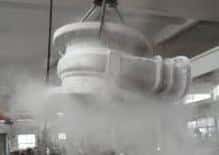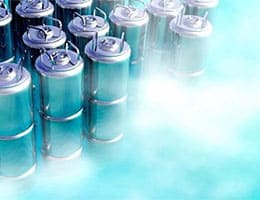 The concept of cryogenics refers to the techniques and practices that are carried out using very low temperatures . Cryogenics is applied in processes in various areas.
The concept of cryogenics refers to the techniques and practices that are carried out using very low temperatures . Cryogenics is applied in processes in various areas.
One of the most frequent uses of cryogenics is linked to superconducting materials (which, under certain conditions, can develop the conduction of electric current without resistance and without energy losses). For superconductivity to be generated, it is necessary to reach very low temperatures, below -138 °C . Cryogenics, in this framework, allows the superconducting magnets in nuclear magnetic resonance equipment to be maintained at the temperature they need, for example.
Another use of cryogenic techniques is in the process of freezing food . By applying carbon dioxide or nitrogen , it is possible to freeze food products for preservation.
The concept of cryogenics also appears linked to cryopreservation , more precisely to cryonics . Cryopreservation is the freezing of tissues and cells at a very low temperature so that their vital functions are reduced to a minimum and biological activity is interrupted. Cryonics consists of preserving human beings and other animals under these conditions when current knowledge is not enough to keep them alive: the objective is that, in the future, with the advancement of science , frozen living beings can be reanimated to receive the adequate treatment.
It is important to note that many scientists doubt the current usefulness of cryonics given the impossibility of reversing the process (that is, of "reviving" beings whose life is suspended).
 The biggest dilemma of cryogenics applied to the conservation of living beings for their subsequent return to life focuses on moral issues, on the rights of living beings, on the scope of our actions on this planet. Many think of the acclaimed Walt Disney when the word cryopreservation arises, since at the time a rumor spread that he had resorted to this technique to avoid dying from lung cancer; However, there are real cases of people who do not participate in this decision, as happened in 2015 with the Thai girl Matherym Naovaratpong .
The biggest dilemma of cryogenics applied to the conservation of living beings for their subsequent return to life focuses on moral issues, on the rights of living beings, on the scope of our actions on this planet. Many think of the acclaimed Walt Disney when the word cryopreservation arises, since at the time a rumor spread that he had resorted to this technique to avoid dying from lung cancer; However, there are real cases of people who do not participate in this decision, as happened in 2015 with the Thai girl Matherym Naovaratpong .
Matherym Naovaratpong, who was affectionately called Einz by his family, died before his third birthday from a brain tumor. Her parents, both medical engineers, decided to "give their daughter a second chance," and to that end they asked the nonprofit organization Alcor , located in Arizona, United States, to keep her brain at its center through cryogenics to bring her back to life in the future .
The suffering of the loss of a loved one is something that cannot be defined, measured or explained, and that we would all like to avoid. However, it is possible to debate that it is not in our hands to decide who lives and who dies, or how long each person's life should last; Although it is difficult for us to accept it, this apparent arbitrariness, which allows an individual to cross the line of one hundred years and takes a girl who is only two, is part of life.
Experts in this type of cryogenics do not promise fantastic results, but rather admit that for the moment they are conducting a real experiment . Many believe that in the middle of this century we will see the first results, but currently there are no patients who have been "revived." In the particular case of Einz, since only her brain is preserved, she herself is not expected to continue living but, in the best of cases, it will be another individual with her memories who returns to the arms of her parents.
